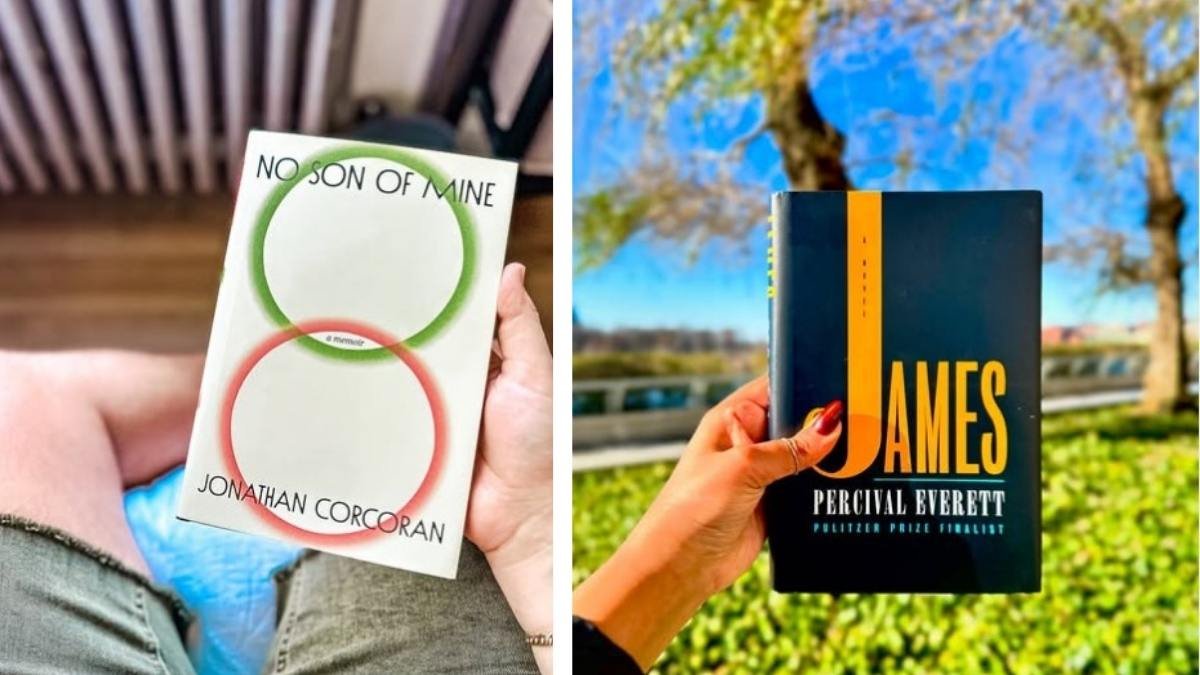
An image of a millionaire typically conjures visions of sprawling mansions, luxury cars, and ostentatious displays of wealth. Yet, nestled among the more modest homes in places like Hinsdale, New Hampshire, or the vibrant community of Airstream trailers in downtown Las Vegas, live individuals who have shattered this stereotype.
They are the millionaires next door, hidden in plain sight, choosing the unassuming environment of a trailer park as their home base. Figures like Geoffrey Holt, the unassuming groundskeeper who left behind a $3.8 million fortune, or Tony Hsieh, the late CEO of Zappos worth $840 million who opted for a 240-square-foot Airstream, challenge our conventional understanding of wealth and success. Their stories aren’t just quirky anomalies; they offer profound insights into the true nature of financial independence and the investment philosophies that can lead to it.
These individuals didn’t just accumulate wealth; they mastered the art of living richly while choosing simplicity. Their secrets aren’t locked away in complex financial instruments but are rooted in timeless principles that prioritize freedom, experience, and a deliberate relationship with money. This article delves into the lives and investment strategies of these unique millionaires, uncovering the practical wisdom that can empower anyone to build lasting wealth, regardless of where they choose to hang their hat.
The Unassuming Millionaire: Geoffrey Holt’s Story
Geoffrey Holt’s life in Hinsdale was a masterclass in understatement. For decades, he was a familiar, almost invisible presence in his trailer park – a groundskeeper at a local mobile home park, often seen in worn, mismatched clothes, riding his second-hand bicycle, or quietly reading by a nearby brook. His trailer was sparsely furnished; he owned no car, no television, and seemed to own little more than the essentials. To his neighbors, he was simply “Geoff,” a quiet, unassuming man who loved model cars, train sets, classical music records, and history books. No one suspected the quiet wealth he had accumulated through decades of disciplined investing.
The shockwaves through Hinsdale were immense when, upon his passing, it was revealed that Holt had left the majority of his estate – a staggering $3.8 million – to the town itself. The funds were designated for community betterment, including the local library, recreation center, and support for local students. This act of generosity wasn’t impulsive; it was the culmination of a life lived with intention. Holt’s sister later shared insights into their upbringing, mentioning their father’s emphasis on the importance of investing and avoiding waste. This early lesson seems to have taken root deeply.

Holt’s investment strategy was as unassuming as his lifestyle. He started investing early, consistently putting money away, likely into mutual funds and dividend-paying stocks, reinvesting his earnings. He wasn’t chasing get-rich-quick schemes or trendy investments. He understood the power of consistency and compound interest, allowing his money to grow steadily over time, much like the quiet growth of a tree by the brook where he often sat reading financial publications.
His story isn’t just about frugality; it’s about the profound power of consistent, long-term investing and the freedom that comes from living well below your means. Holt found contentment not in possessions, but in his simple pleasures and the security his investments provided, a security that ultimately allowed him to leave a lasting legacy for his community.
The Tech CEO in a Trailer Park: Tony Hsieh’s Choice
Tony Hsieh’s decision to live in a 240-square-foot Airstream trailer in downtown Las Vegas, even while helming the hugely successful online retailer Zappos (and amassing a net worth of $840 million), was a deliberate and public rejection of conventional status symbols. For Hsieh, the choice wasn’t about hiding his wealth but about actively designing a life that prioritized community, serendipity, and experiences over material accumulation. His Airstream, parked in a lot he helped transform into a vibrant community space, became a symbol of his investment in living rather than just owning.
Hsieh’s reasoning was multifaceted. He was deeply inspired by the culture of Burning Man, which emphasizes community, gifting, and self-expression over consumerism. Living in the Airstream park allowed him to foster a similar sense of connection and collaboration. The close quarters encouraged interaction, with communal campfires, outdoor movie nights, and even a pet alpaca named Marley creating a unique and tight-knit community. Hsieh believed that this environment stimulated creativity and innovation, qualities essential for his business ventures.

Crucially, Hsieh’s choice also reflected a sophisticated understanding of value. He saw his wealth not as a means to acquire more things, but as a tool to create the life he truly wanted – one filled with meaningful connections and experiences. His investment in the Airstream park and downtown Las Vegas wasn’t just financial; it was an investment in a lifestyle and a community he believed in.
It demonstrated that true wealth isn’t just about the size of your bank account, but about the quality of your life and the impact you have on the world around you. Hsieh’s story challenges us to reconsider what we value and how our financial decisions can align with those values, even when they diverge from societal expectations.
The Psychology of Wealth: Why Millionaires Choose Simplicity
The choice by millionaires like Holt and Hsieh to embrace simplicity, even while possessing significant wealth, is rooted in a distinct psychological framework that redefines what it means to be truly rich. For these individuals, wealth isn’t primarily about the ability to consume more; it’s about the freedom to live authentically and pursue what genuinely brings fulfillment. This mindset represents a profound shift away from the consumerist culture that often equates success with material accumulation.
At the core of this psychology is a deep understanding of the concept of “enough.” These millionaires have often reached a point where they recognize that additional material possessions provide diminishing returns in terms of happiness and life satisfaction. They experience what researchers call “the hedonic treadmill” – the tendency to quickly return to a relatively stable level of happiness despite major positive or negative events or life changes – and consciously choose to step off it. Their focus shifts from having more to being more and doing more that aligns with their values.

This simplicity offers numerous psychological benefits. Financially, living below their means reduces stress and anxiety related to money, providing a sense of security that is itself a form of wealth. It also frees up mental bandwidth that might otherwise be consumed by managing complex lifestyles or worrying about maintaining appearances. Creatively, a simpler life with fewer distractions can foster deeper thinking and innovation.
Socially, choosing environments like trailer parks can facilitate more genuine connections with a diverse range of people, fostering a stronger sense of community and belonging, which are key components of well-being. Ultimately, their choice reflects a prioritization of internal fulfillment and freedom over external validation through material display.
The Foundation of Investment Success: Early Lessons and Habits
The investment success of trailer park millionaires like Geoffrey Holt didn’t materialize overnight; it was built on a foundation laid early in life, often through subtle but powerful lessons absorbed from family, personal experiences, and a commitment to self-education. These early influences shaped their financial mindsets and instilled habits that proved crucial over decades of wealth building.
In Holt’s case, his sister’s recollection of their father’s teachings highlights the importance of intergenerational financial wisdom. The simple yet profound lesson about the importance of investing and avoiding waste became a guiding principle. Such early lessons, often imparted through observation and everyday conversations rather than formal instruction, can have a lasting impact, normalizing saving and investing behaviors from a young age.

Beyond family influence, personal experiences play a significant role. Early encounters with financial hardship or witnessing the consequences of poor financial decisions can instill a deep appreciation for financial stability and the discipline required to achieve it. Conversely, even small early successes with saving or investing can build confidence and reinforce positive habits.
Self-education is another critical component. Holt’s habit of reading financial publications by the brook demonstrates a proactive approach to learning about money management and investing. In an era where financial literacy is often lacking in formal education, the initiative to seek out knowledge through books, articles, and later, online resources, is a common trait among successful self-made investors.
These early lessons and habits – whether learned from family, experience, or self-study – create a behavioral foundation. They establish the routine of saving consistently, living below one’s means, and approaching investing with a long-term perspective, habits that are far more predictive of long-term wealth than chasing high returns in the short term.
The Power of Frugality: Living Below Your Means
Frugality is not merely a habit for millionaires like Geoffrey Holt; it is a strategic cornerstone of their investment philosophy and a powerful engine for wealth accumulation. By consciously choosing to live well below their means, they create a significant gap between their income and their expenses, freeing up substantial capital to be invested consistently over time. This isn’t about deprivation for its own sake, but about prioritizing financial freedom and long-term security over immediate, often fleeting, consumption.
Holt’s life exemplified this principle. His lack of a car, his sparse furnishings, and his simple wardrobe weren’t signs of poverty but deliberate choices that minimized his cost of living. Every dollar not spent on depreciating assets or status symbols was a dollar that could be put to work in the financial markets, compounding over decades. Similarly, Tony Hsieh’s choice of a tiny Airstream over a luxury mansion represented a significant reduction in housing costs, redirecting those funds towards investments in his business, his community, and his lifestyle priorities.

The benefits of frugality extend beyond just freeing up investment capital. Psychologically, it reduces financial stress and fosters a sense of control over one’s financial destiny. It builds resilience against economic downturns and unexpected expenses. Financially, the consistent surplus it creates allows for regular investing, taking full advantage of dollar-cost averaging and the power of compound interest.
Moreover, frugality often correlates with a more mindful approach to consumption, leading to more intentional spending on experiences and items that genuinely add value to life, rather than mindless accumulation. It’s a powerful reminder that building wealth isn’t just about earning more; it’s equally, if not more, about strategically spending less.
The Magic of Compound Interest: Time Is Your Greatest Asset
Compound interest is often hailed as the eighth wonder of the world, and for good reason. It is the single most powerful force in building long-term wealth, and millionaires like Geoffrey Holt harnessed its potential through decades of consistent investing. Unlike simple interest, which only earns returns on the initial principal, compound interest earns returns on both the principal and the accumulated interest from previous periods. This creates an exponential growth curve that becomes truly dramatic over long time horizons.
Holt’s story illustrates this perfectly. Starting to invest early in his career, even with modest amounts, allowed his investments decades to grow. His early investment in a communications mutual fund, before mobile phones became ubiquitous, wasn’t just a lucky pick; it was an investment given time to mature and multiply. The returns earned in the first decade generated their own returns in the second decade, and so on, creating a snowball effect that turned consistent, relatively small contributions into a multi-million dollar fortune.
The key ingredient here is time. The longer the investment period, the more profound the impact of compounding. This is why starting early, even with small amounts, is far more effective than trying to catch up later with larger contributions. It also underscores the importance of patience and a long-term perspective. Market fluctuations are inevitable, but investors like Holt understood that staying invested through downturns, allowing compounding to continue uninterrupted, is crucial.
For aspiring investors, the lesson is clear: prioritize time in the market over timing the market. Begin investing as early as possible, contribute consistently, and let the incredible power of compound interest work its magic over the long haul.
The Value Investing Approach: Buying Quality at a Discount
While frugality governed their personal spending, millionaires like Holt often applied a parallel philosophy to their investing: value investing. This approach, popularized by Benjamin Graham and exemplified by Warren Buffett, focuses on identifying and purchasing quality companies whose stocks are trading for less than their intrinsic value – in other words, finding a dollar for fifty cents.
Holt’s early investment in a communications mutual fund before the mobile phone boom suggests an ability to recognize value in emerging industries. Value investors look for companies with strong fundamentals: solid balance sheets, consistent earnings, good management, and a competitive advantage, often referred to as an “economic moat.” They are less concerned with short-term market trends or popular opinion and more focused on the underlying worth of the business.

This approach requires patience and discipline. It often involves buying stocks that are currently out of favor or overlooked by the market, which can be psychologically challenging. However, the potential rewards are significant. When the market eventually recognizes the true value of the company, the stock price tends to rise, leading to substantial gains for the patient investor.
Value investing isn’t about chasing the latest hot stock tip; it’s about thorough research, understanding the business, and having the conviction to buy when others are selling and hold when others are panicking. For individual investors, adopting even a simplified version of this approach – focusing on quality, seeking a margin of safety, and thinking like an owner of the business rather than just a trader of its stock – can significantly improve long-term investment outcomes.
Diversification: Spreading Your Bets to Reduce Risk
Even the most astute investors can’t predict the future with certainty. Markets are complex and influenced by countless unpredictable factors. This inherent uncertainty makes diversification – the practice of spreading investments across various asset classes, industries, and geographies – a fundamental principle of sound investment strategy, one that millionaires like Holt implicitly understood.
By not putting all their eggs in one basket, investors can significantly reduce the risk of catastrophic losses. If one investment performs poorly, others in the portfolio may perform well, cushioning the blow and smoothing out overall returns. Holt’s investment in a mutual fund, which by its nature holds a diversified portfolio of stocks, was a simple way to achieve this. It provided exposure to a broad range of companies and sectors, reducing the risk associated with investing in individual stocks.

Diversification can be achieved in numerous ways: across asset classes (stocks, bonds, real estate), within asset classes (different industries and company sizes in a stock portfolio), and geographically (investing in both domestic and international markets). The specific mix depends on an individual’s risk tolerance, investment goals, and time horizon.
The benefits of diversification are clear: it reduces volatility, provides more consistent returns over time, and increases the likelihood of achieving long-term financial goals. While it may limit the potential for spectacular gains from a single, high-flying investment, it also protects against the devastating losses that can occur from putting everything into a single investment that goes sour. For most investors, particularly those focused on building and preserving wealth over the long term, diversification isn’t just a good idea; it’s essential.
The Importance of Continuous Learning: Staying Ahead of the Curve
The financial world is not static. Markets evolve, new investment products emerge, economic conditions shift, and regulations change. Millionaires who built their wealth through investing, even those with seemingly simple strategies like Holt, understand that continuous learning is not optional; it’s a necessity for sustained success. Staying informed and adaptable is key to navigating the complexities of the investment landscape.
Holt’s habit of reading financial publications by the brook wasn’t just a pastime; it was a deliberate practice of staying educated about money matters. In today’s information age, the opportunities for continuous learning are vast. Investors can access a wealth of resources: financial news websites and apps, investment blogs and podcasts, online courses, webinars, and countless books covering every aspect of personal finance and investing.

This ongoing education serves several purposes. It helps investors understand market trends and economic indicators, allowing them to make more informed decisions. It exposes them to new investment strategies and asset classes they might not have considered otherwise. It also helps them stay vigilant against scams and unsuitable investments. Furthermore, learning from the experiences of other successful investors – through biographies, interviews, and case studies – can provide invaluable insights and reinforce sound principles.
Continuous learning fosters adaptability. The investment strategies that worked brilliantly in one economic environment might be less effective in another. By staying curious and informed, investors can adjust their approaches as needed, ensuring their strategies remain relevant and effective over time. It’s not about chasing every new fad, but about maintaining a solid understanding of the principles and being able to apply them thoughtfully in changing circumstances.
The Role of Patience and Discipline: Avoiding Emotional Investing
Patience and discipline are perhaps the most underrated virtues in investing, yet they are absolutely critical to long-term success. Millionaires like Holt didn’t achieve their wealth by reacting impulsively to market headlines or letting fear and greed dictate their decisions. They understood that successful investing is often about doing nothing, about staying the course even when it’s uncomfortable.
Market volatility is inevitable. Prices fluctuate daily, sometimes wildly, driven by news, economic data, or simply shifts in investor sentiment. It’s easy to get caught up in the emotion of the moment – to panic and sell when prices drop, or to get greedy and chase a hot stock when prices are soaring. However, these emotional reactions are often detrimental to long-term returns.

Holt’s ability to hold onto his investments through various market cycles, allowing compound interest to work its magic, required immense patience and discipline. He likely had a well-thought-out investment plan and stuck to it, regardless of short-term noise. This means having the discipline to contribute regularly (dollar-cost averaging), the patience to hold investments for years or even decades, and the fortitude to ignore the constant stream of often contradictory financial advice.
Developing these traits isn’t easy, but it’s essential. Strategies include having a clear investment plan with defined goals and risk tolerance, automating investments to remove emotional decision-making, focusing on long-term objectives rather than short-term fluctuations, and maintaining perspective during market downturns, remembering that they are a normal part of the investing cycle. For most investors, mastering their own emotions is far more important than mastering complex financial instruments.
Giving Back: The Philanthropic Side of Wealth
For many millionaires who embrace simplicity, philanthropy becomes a natural and fulfilling extension of their wealth. Having achieved financial security and chosen to live modestly, they often find deep satisfaction in using their resources to make a positive impact on their communities or support causes they care about. Their giving isn’t just about writing checks; it’s often deeply personal and tied to their values and life experiences.
Geoffrey Holt’s $3.8 million bequest to the town of Hinsdale is a prime example. He didn’t just leave money; he left a legacy aimed at improving the lives of his neighbors and supporting local institutions like the library and recreation center. His philanthropy was a reflection of his quiet life and his connection to the community he called home.
Similarly, Tony Hsieh invested significant time and money into revitalizing downtown Las Vegas, driven by a desire to create a more vibrant and connected urban environment. His giving was an investment in a vision of community he passionately believed in.
The motivations for such philanthropy are varied. A sense of gratitude and a desire to give back to the community that supported them is common. For some, it’s about leaving a lasting legacy that reflects their values. Others find personal fulfillment and a sense of purpose in helping others. There can also be practical benefits, such as tax advantages, although this is often a secondary consideration for those giving at this level.
Regardless of the motivation, the philanthropic efforts of these millionaires highlight a broader understanding of wealth – not just as a means for personal consumption, but as a tool for positive change. Their stories inspire us to think about how we might use our own resources, whatever their scale, to contribute to the greater good.
Lessons for Aspiring Investors: Applying These Secrets to Your Own Life
The stories and strategies of millionaires like Geoffrey Holt and Tony Hsieh offer more than just inspiration; they provide a practical blueprint for building wealth that can be adapted by almost anyone. The core principles they embody – frugality, consistent investing, patience, continuous learning, and a focus on value – are timeless and accessible.
First, embrace frugality. This doesn’t mean living in deprivation but being mindful of your spending and prioritizing financial freedom over status symbols. Find areas in your life where you can cut back without significantly impacting your happiness, and redirect those funds towards savings and investments.
Second, start investing early and contribute consistently, no matter how small the amount. The power of compound interest is your greatest ally, but it needs time to work. Automate your investments if possible, making it a regular, non-negotiable part of your financial routine.
Third, adopt a long-term perspective and cultivate patience. Ignore the short-term noise of the market and focus on your long-term goals. Develop an investment plan that aligns with your risk tolerance and time horizon, and have the discipline to stick to it through market ups and downs.
Fourth, commit to continuous learning. Take the time to understand basic investment principles, read reputable financial sources, and consider learning about value investing or other strategies that resonate with you. Knowledge builds confidence and leads to better decisions.
Fifth, consider diversification to manage risk. Don’t put all your money into a single stock or asset class. Explore low-cost index funds or ETFs as a simple way to achieve broad diversification.
Finally, define what true wealth means to you. Is it solely a number in your bank account, or does it include freedom, experiences, community, and the ability to give back? Aligning your financial goals with your personal values can provide powerful motivation and lead to a more fulfilling life, regardless of where you choose to live.
Conclusion
The millionaires who choose to live in trailer parks offer us a profound lesson in redefining wealth and success. Their stories remind us that true financial independence isn’t measured by the size of our homes or the luxury of our cars, but by the freedom to live life on our own terms, aligned with our values. Geoffrey Holt’s quiet accumulation of millions through consistent investing and frugal living, and Tony Hsieh’s deliberate choice of community and experience over material display, challenge conventional notions of status and success.
Their investment secrets aren’t hidden in complex formulas or exclusive clubs. They are grounded in timeless principles: the consistent application of frugality to free up capital, the patient harnessing of compound interest over decades, the disciplined pursuit of value, the wisdom of diversification, and the commitment to continuous learning. These are strategies accessible to anyone willing to adopt the right mindset and habits.
Ultimately, the “millionaire mindset” isn’t just about accumulating wealth; it’s about understanding the purpose of that wealth. It’s about prioritizing freedom, experiences, and contribution over mere consumption. By embracing simplicity, living below our means, investing consistently with a long-term view, and defining success on our own terms, we can all embark on the path to financial freedom. The millionaire next door in the trailer park shows us that this path isn’t just for the privileged few; it’s a journey open to anyone with the discipline, patience, and wisdom to walk it.







